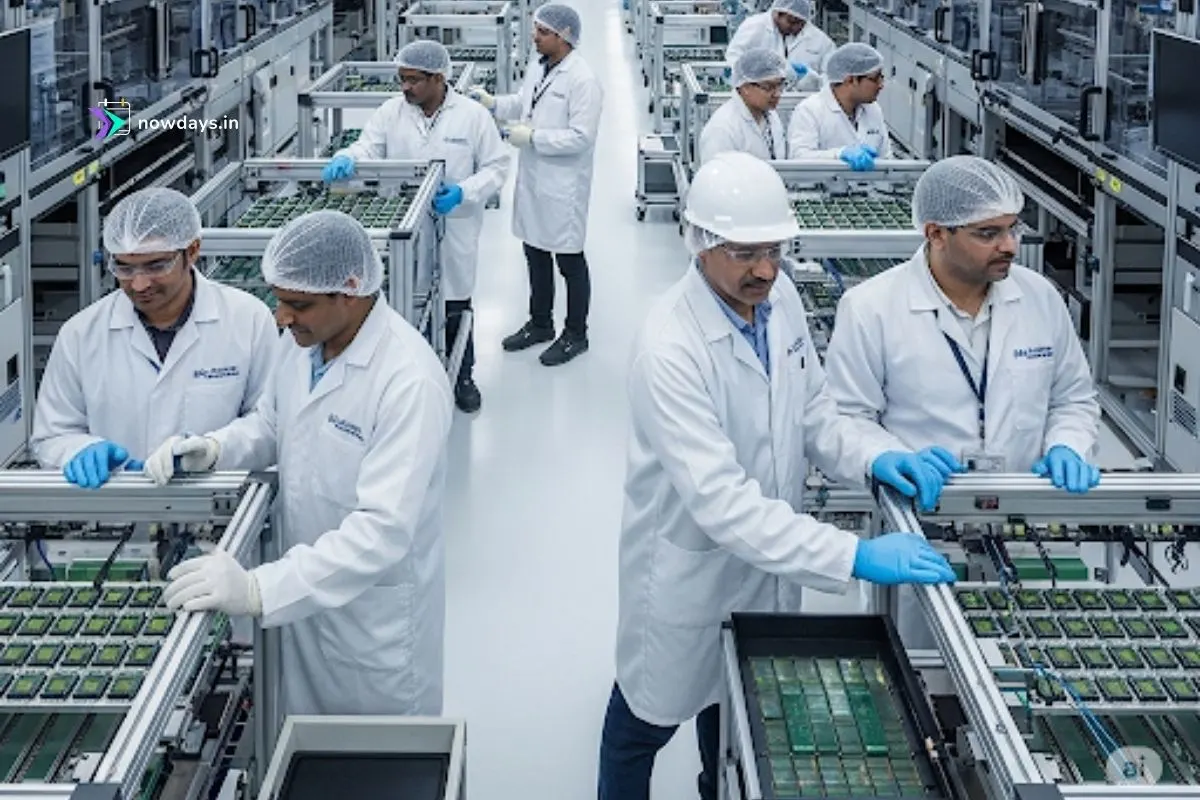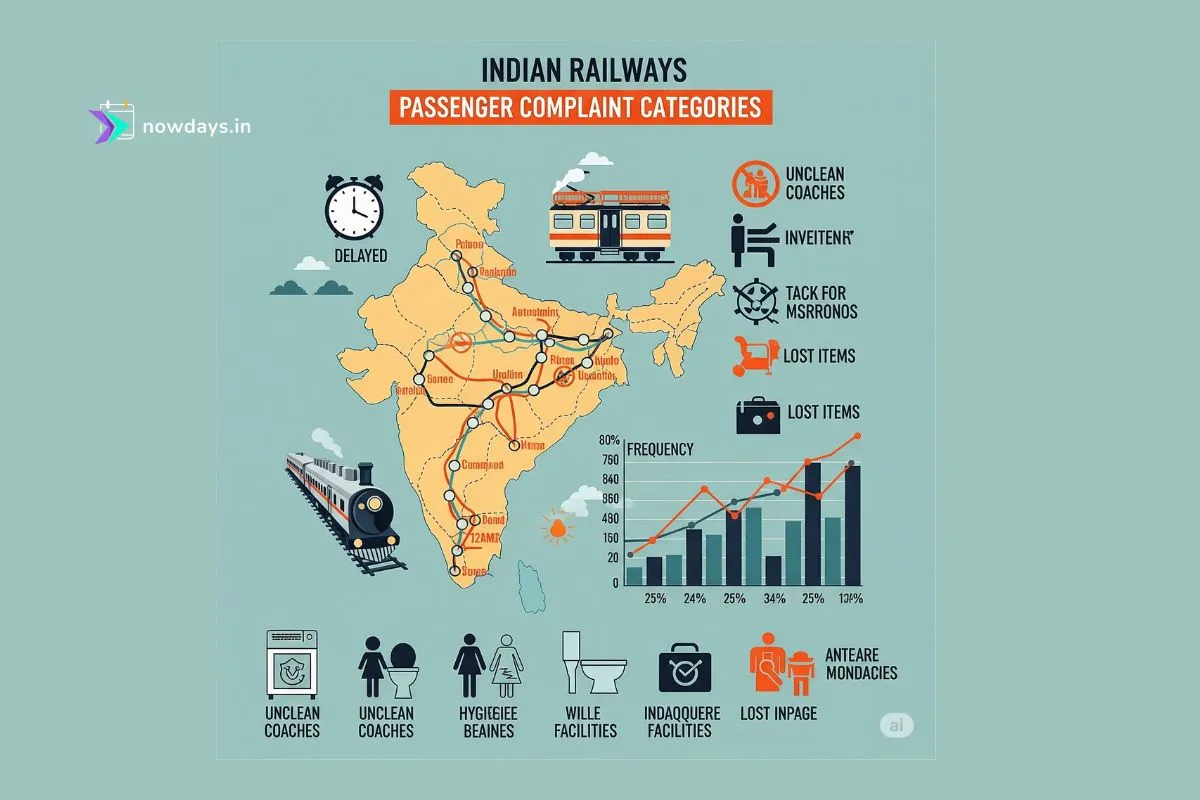The Union Cabinet has approved six major semiconductor projects across India, marking a big leap in Prime Minister Modi’s chip‐making push. Together they involve roughly ₹1.55 lakh crore of investments and are expected to generate tens of thousands of jobs. The projects span front-end fabs and back-end packaging units (ATMP/OSAT). Key players include Tata Electronics (with Taiwan’s Powerchip), Micron Technology (USA), Kaynes Technology (India), CG Power (with Japan’s Renesas and Thailand’s Stars), and a new HCL‑Foxconn JV. Locations cover Dholera and Sanand in Gujarat, Jagiroad in Assam, and Jewar in UP.

Who’s Who: Companies, Investments and Locations
- Tata Electronics‑PSMC (Dholera, Gujarat) – Fab. Tata’s unit (in partnership with Taiwan’s Powerchip) will produce advanced 28nm compute chips. It received approval in Feb 2024 for an investment of about ₹91,500 crore. The plant can manufacture ~50,000 wafers per month and will make chips for EVs, telecom, defence, automotive, consumer electronics and power management.
- Micron Technology (Sanand, Gujarat) – Fab. US chipmaker Micron’s high-end memory fab was approved in June 2023. The two-phase project has about $2.75 billion (~₹23,000 crore) of investment. First chips are expected by late 2024, with most output slated for export.
- Tata Electronics (Jagiroad, Assam) – ATMP. An assembly‐test (ATMP) unit was cleared in Feb 2024 with ₹27,000 crore funding. Called “Tata Semiconductor Assembly and Test”, it will use indigenous packaging technologies to produce up to 48 million chips per day. The Assam plant (India’s first in the Northeast) targets automotive, EV, consumer and telecom segments.
- CG Power‑Renesas‑STARS (Sanand, Gujarat) – ATMP. Murugappa Group’s CG Power is setting up a packaging/testing unit with Japan’s Renesas and Thailand’s STARS. Approved in early 2024 with ₹7,600 crore investment, it will handle ~15 million chips per day (for industrial, automotive, power and consumer uses).
- Kaynes Technology (Sanand, Gujarat) – OSAT. Kaynes Semicon India will build an outsourced assembly and test (OSAT) facility in Sanand. Approved Sep 2024 for ₹3,300 crore, it can process ~6.33 million chips per day (scalable toward 1 billion per year).
- HCL‑Foxconn (Jewar, UP) – Fab. In May 2025 the Cabinet approved a joint venture between HCL Group and Taiwan’s Foxconn to set up a display-driver chip fab near Jewar Airport. This Rs 3,706 crore project will design 20,000 wafers/month (36 million display chips/month). It will meet ~40% of India’s demand for such chips, with the rest exported to Foxconn’s global units. Production is slated to begin in 2027, creating roughly 2,000 direct jobs.
Read more: Amazon Lists Nearly 5,500 H-1B Job Openings with $153K Median Salary
Jobs, Capacity and Production Timeline
The six projects will employ tens of thousands of workers, both directly and indirectly. The government estimates at least 27,000 direct jobs from these fab/packaging units, with many more in ancillary industries. (Tata Group alone says its chip ventures will spur ~50,000 jobs including indirect roles.) Industry analysts project ~80,000 total jobs once all five earlier projects (plus Jewar) are built.
Production timelines are aggressive. Union IT Minister Ashwini Vaishnaw has announced that Micron’s first chips should roll out by late 2024 and Tata’s Dholera fab by Dec 2026. The Jewar fab will start in 2027. The Assam ATMP plant is expected on a similar schedule – even before the Dholera fab begins production. Overall, officials say India could begin making “hundreds of millions” of chips a year by the late 2020s, and aims to be among the top five global chip ecosystems by 2029.
Official Statements and Industry Views
At the project ground‐breakings and press briefings, senior leaders underlined the national importance of the chip push. PM Narendra Modi – speaking at Semicon India 2024 – quipped “In 21st-century India, the chips are never down” and said “every device in the world will have an Indian-made chip”. IT Minister Ashwini Vaishnaw noted that semiconductors are a “foundational” industry powering everything from fridges to aircraft, and hailed the momentum: “Already five semiconductor units are in advanced stages of construction. With this sixth unit, Bharat moves forward in its journey to develop the strategically vital semiconductor industry,” the government said. Tata Group chief N. Chandrasekaran said Tata’s chip projects will “initially create 50,000 direct and indirect jobs”. Uttar Pradesh CM Yogi Adityanath called the Jewar plant “a historic step towards Atmanirbhar Bharat” and noted that Uttar Pradesh is emerging as a hub for high-end electronics.
India’s Semiconductor Mission and Global Context
These approvals are part of the Semicon India Programme (budget ~₹76,000 crore) launched in 2021. Under the scheme the Centre funds up to 50% of capex on fabs, display fabs and ATMP/OSAT plants. So far the government has approved 5–6 projects under this program, with cumulative investment around ₹1.5 lakh crore. India has also signed MoUs with the US, EU, Japan and Singapore to support chip ecosystems. Altogether, analysts note India is moving quickly to build a local semiconductor supply chain: about $18 billion is already committed to the first phase (as per the Indian Semiconductor Mission). A Jefferies report says India aims to quadruple electronics production to $500 billion by 2030, which could generate ~80,000 jobs in semis.
For comparison, the US CHIPS Act provides roughly $50–53 billion in incentives for domestic chip making (including R&D and fabs). China, by contrast, has pumped tens of billions into state-backed funds (about $38 billion in equipment spending in 2025 alone). India’s ₹76,000-cr program (around $10 billion) is smaller, but officials say it is drawing global players. A US commerce official recently praised India’s Production-Linked Incentive (PLI) schemes as “encouraging” for attracting US firms. India is focusing on proven chip technologies (like 28nm) to start, paralleling its success in automotive manufacturing.
Strategic Significance for Electronics and Defence
Expanding chip fabrication in India has broad implications. The consumer electronics and auto industries will benefit from secure, local chip supplies – smartphones, TVs, electric vehicles and refrigerators all use semiconductors. It also underpins “Atmanirbhar Bharat” goals in defence electronics. Modern military systems (drones, radars, guided weapons) rely on advanced semiconductors, and India currently imports over 90% of its chip needs. Domestic fabs and ATMP units will reduce this dependence and ease supply-chain risks. As Ashwini Vaishnaw observed, Indian-made chips will eventually power cars and gadgets around the world.
In short, today’s approvals mark a watershed in India’s chip mission: with senior leaders pledging robust fiscal support and global collaborations, the new plants will create an indigenous semiconductor ecosystem. Experts say it may take years for India to rival Taiwan or South Korea in chip output, but the foundations are now being laid for a “semiconductor revolution” in the country.
Sources: Government press releases and news reports from Economic Times, Indian Express, Times of India, Business Standard, etc., including Lok Sabha replies and PIB statements. (All figures and quotes cited above are from these sources.)








